| Filinia longiseta longiseta : lateral view of swimming specimen. In contrast to Filinia terminalis the posterior (caudal) appendage is distinct from the body. |
| |
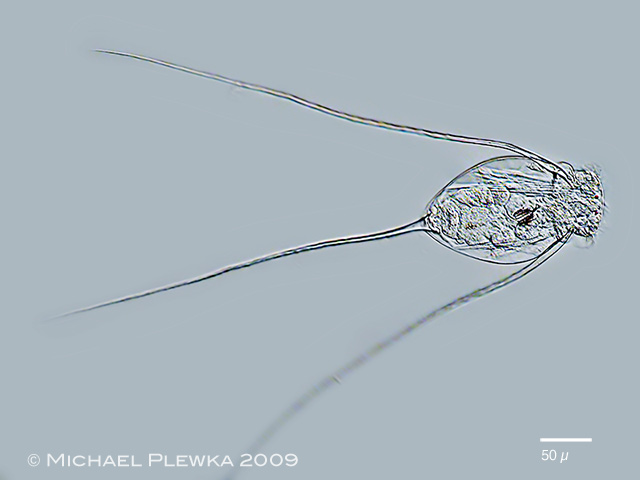 |
| Filinia longiseta longiseta : dorsal view of a swimming specimen (3) |
| |
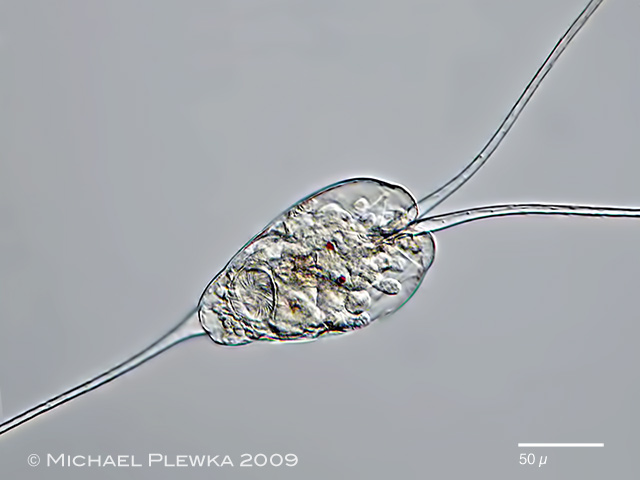 |
| Filinia longiseta longiseta : dorsoventral view. The head and anterior body can be retracted (see below) very fast. The lateral setae are then folded forwardly, causing a sudden backward moving of the whole rotifer to escpape predators like Asplanachna. (3) |
| |
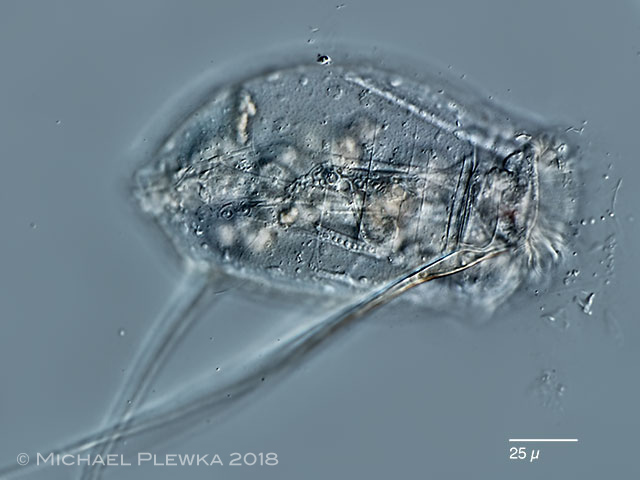 |
| Filinia longiseta longiseta : lateral view; focus plane on the retractor muscles of the setae. (6.5.2011) |
| |
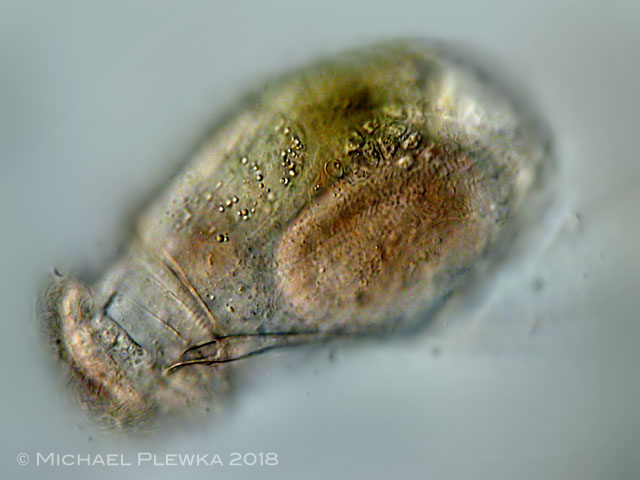 |
| Filinia longiseta longiseta. The lateral setae enable Filinia to make sudden movements in the water body. The base of the lateral seta consists of a fork-like structure with two prongs of different length, whichare fixed at the integument of the head, but with no visible connection to any muscles. So how is the jumping movement accomplished? Basically Filinia is rowing: if Filinia is scared by other planktonic animals the head is retracted into the body taking the tips of the prongs into the body as well. A reinforced ring around the margin of the body cuticula acts a counter bearing so that the rest of the seta is pulled forwards, which in turn leads to a backward movement of the whole animal. |
| see video >>>> |
| |
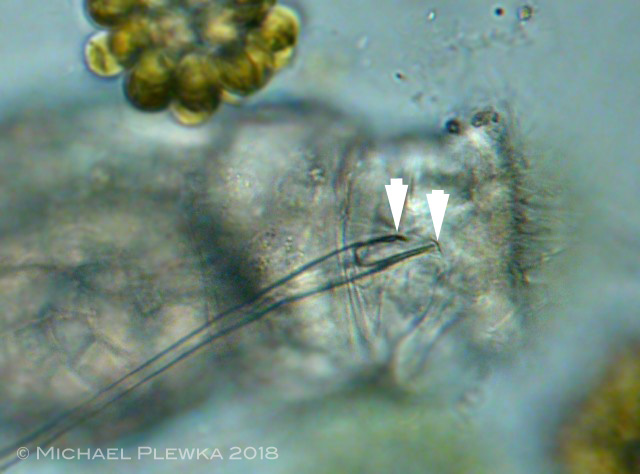 |
| Filinia longiseta longiseta : suspension of the right lateral seta. The arrowheads point to the tips of the lateral setae which are fixed to the integument. See also the base of appendages in Notholca bipalium. |
| see video >>>> |
| |
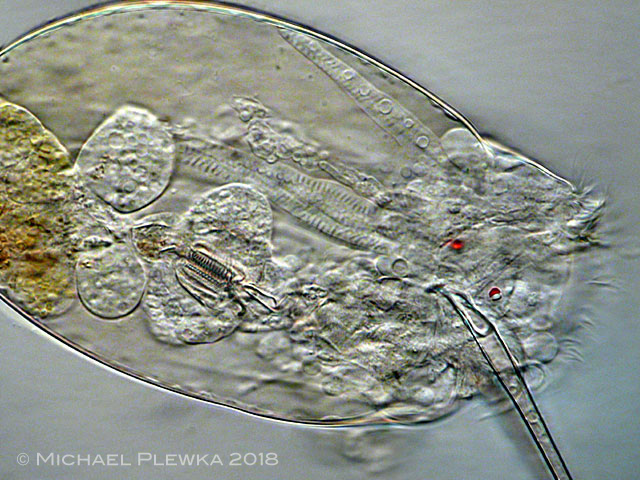 |
| Filinia longiseta longiseta : retractor muscles |
| |
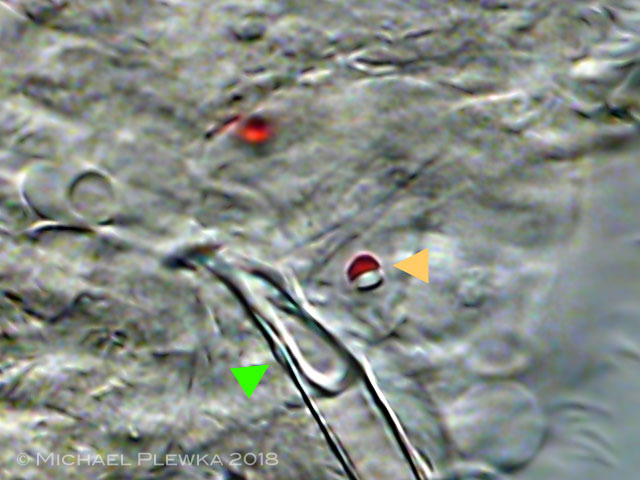 |
| Filinia longiseta longiseta : crop of the above image; showing the eyespot with a "lens" (yellow triangle). The green triangle points to the base of the appendage. |
| |
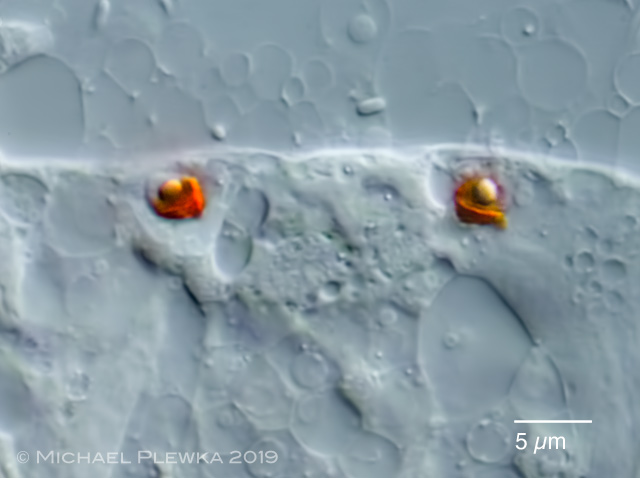 |
| Filinia longiseta longiseta : compressed specimen from (3); detail of the eyespots with lens. |
| |
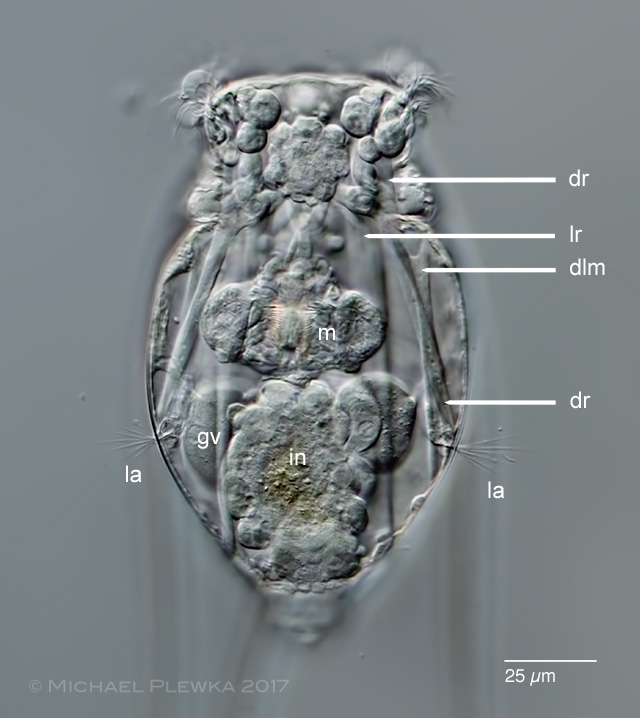 |
| Filinia longiseta longiseta: dorsoventral view of a slightly compressed specimen: dr: dorsal retractor muscle; lr: longitudinal retractor muscle; dlm: laterodorsal muscle; m: mastax with trophi; gv: germovitellarium; in: intestinum; la: lateral antennae. |
| |
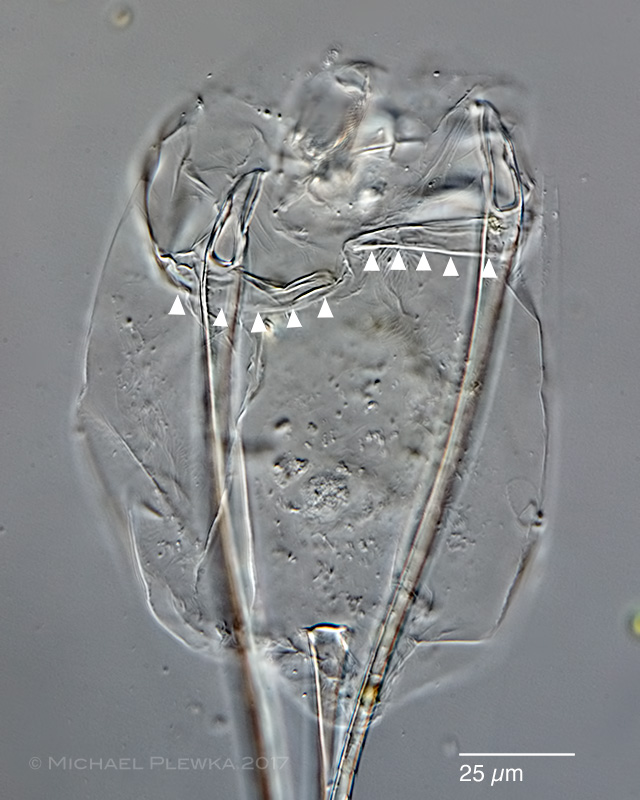 |
| Filinia longiseta longiseta: dorsoventral view of a macerated specimen: the triangles mark the cuticularized and thus reinforced anterior border of the trunk which serves as counter bearing. |
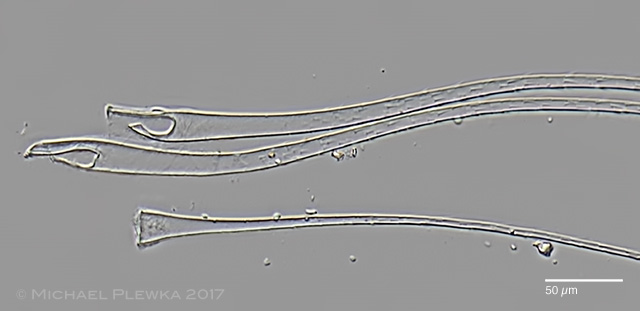 |
| Filinia longiseta longiseta: body appendages of a macerated specimen. All setae are hollow; but may have fine stings. |
| |
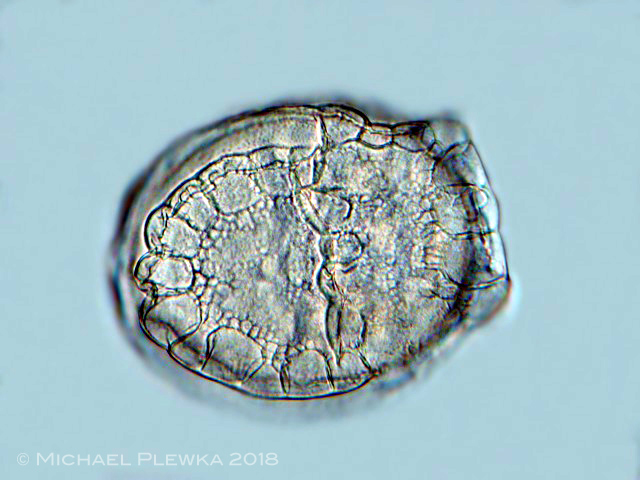 |
| Filinia longiseta longiseta : resting egg (20.10.2006) |
|
| |
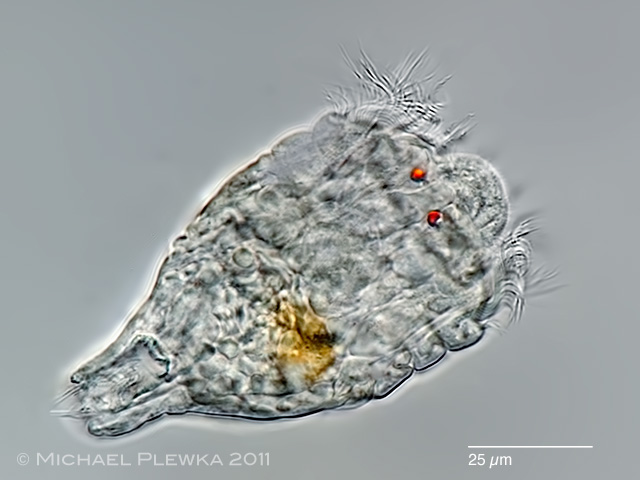 |
| Filinia longiseta longiseta : male specimen, dorsoventral view (05.09.2011) |
| |
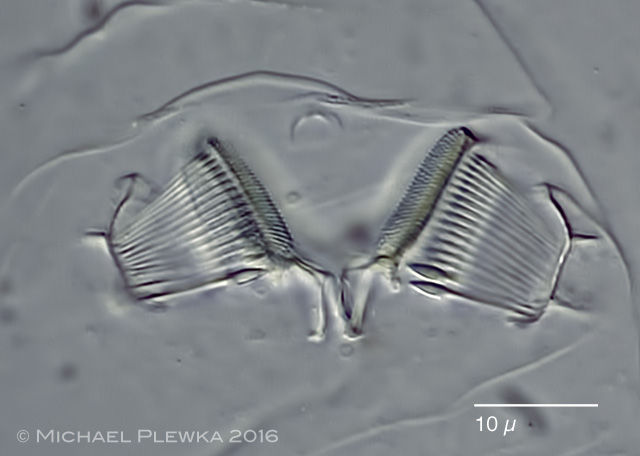 |
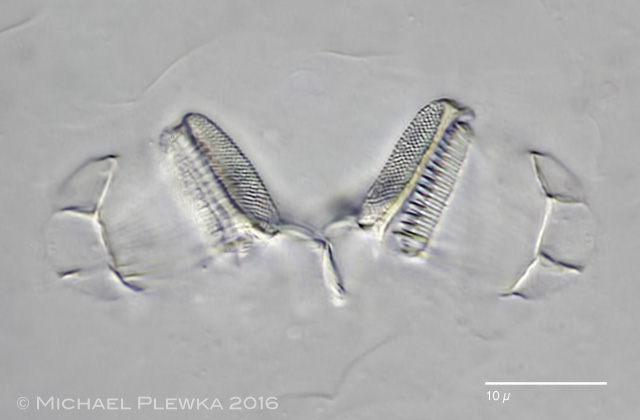 |
| Filinia longiseta longiseta : two aspects of the malleoramate trophi, different focus planes. (5) |
|
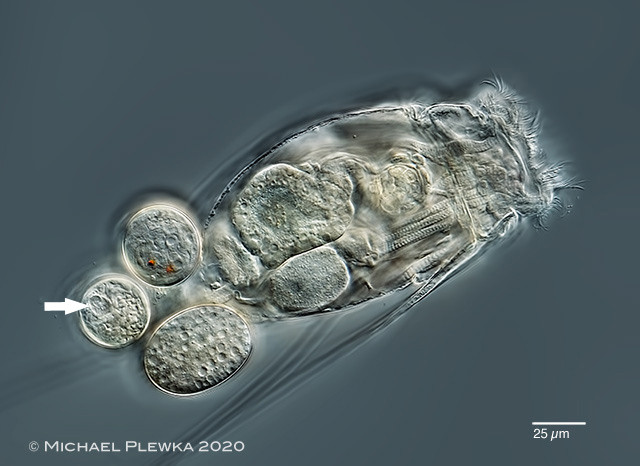 |
| Filinia longiseta longiseta : female carrying 3 mictic eggs with males . The arrow points to the optical transects of the penis of the male in the egg. (6) |
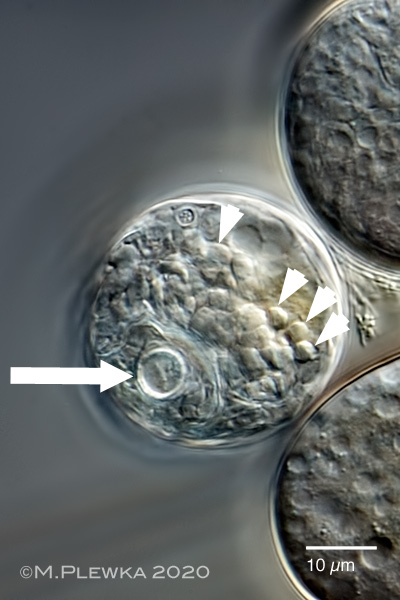 |
| ilinia longiseta longiseta : closeup of the above specimen. . The arrow points to the optical transects of the penis of the male in the egg. The arrowheads point to some of the sperm cells which are also already moving in the male. (6) |
| |
| |
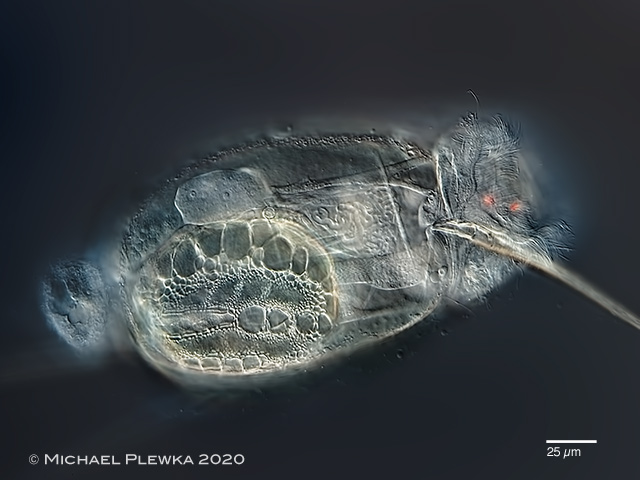 |
| Filinia longiseta longiseta: female carrying a resting egg; focus plane on the shell surface. (6) |
| |
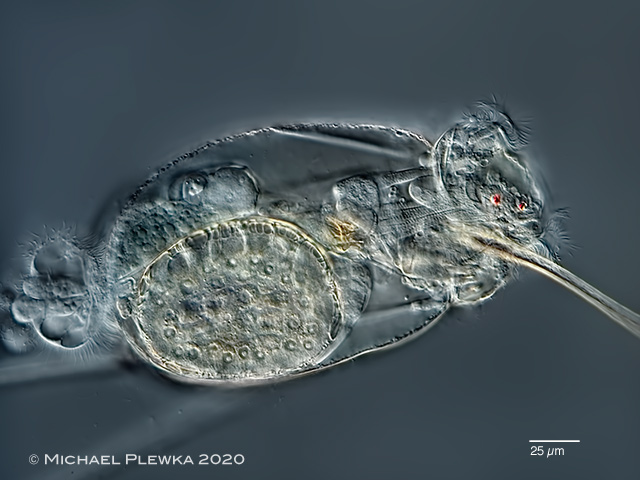 |
| Filinia longiseta longiseta: same female carrying a resting egg; focus plane on the interior of the egg showing some of the nuclei of the developing embryo (see arrowheads in the image below). (6) |
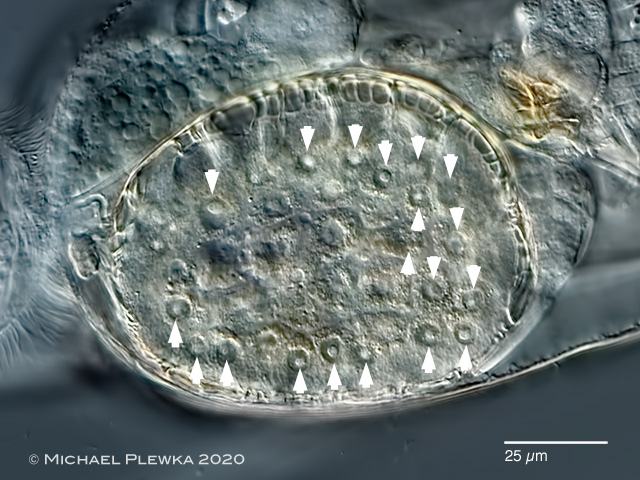 |
| Filinia longiseta longiseta: crop of the above image: the arrowheads point to some of the nuclei of the developing embryo. (5) |
| |
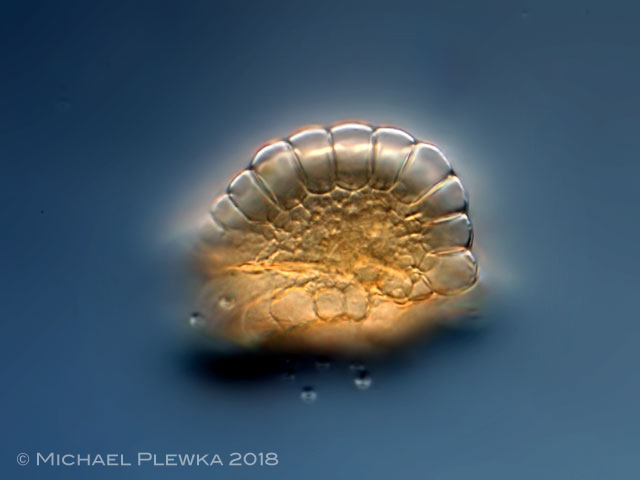 |
| Filinia longiseta longiseta: resting egg, side view (4) |
| |
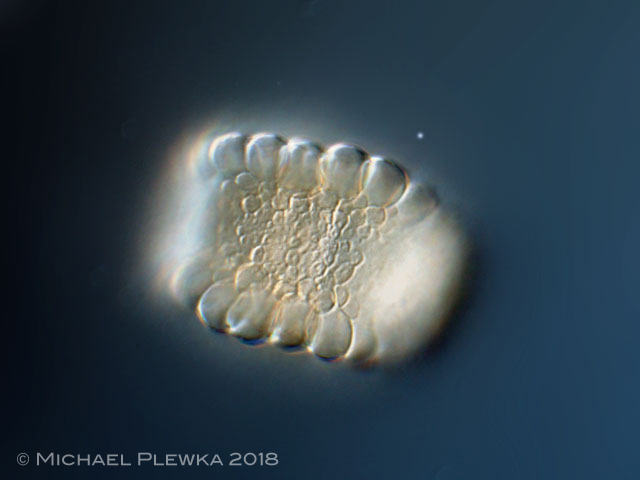 |
| Filinia longiseta longiseta: resting egg, top view (4) |
| |
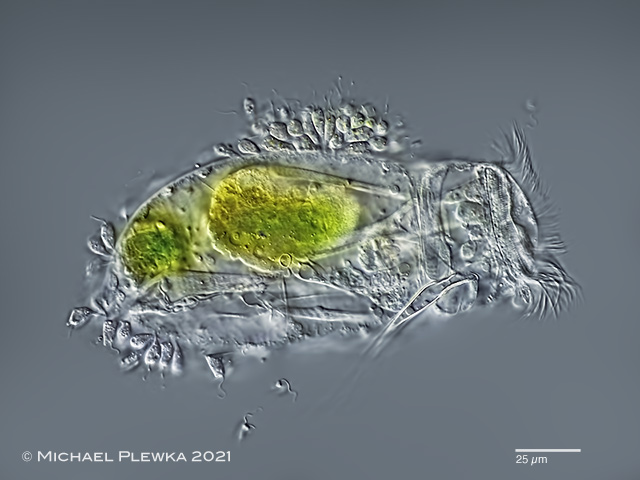 |
| Filinia longiseta longiseta: infested by flagellated ectoparasites. Also in focus is the right lateral antenna (see image below) (6) |
| |
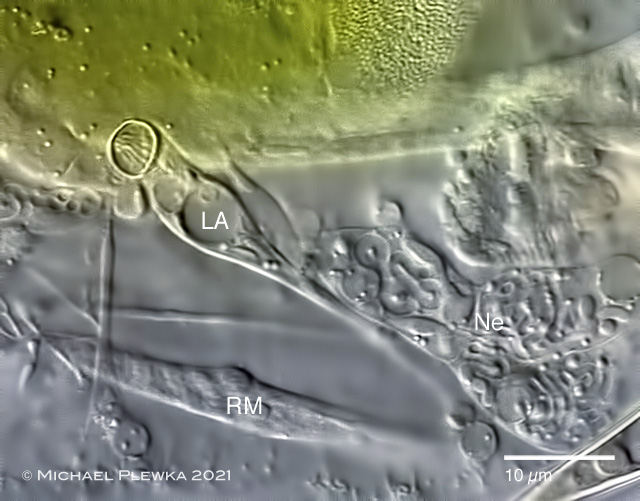 |
| Filinia longiseta longiseta: right lateral antenna (LA, crop of the above image). Ne: nephridial system (part of); RM:cross-striated retractor muscle (6) |
| |
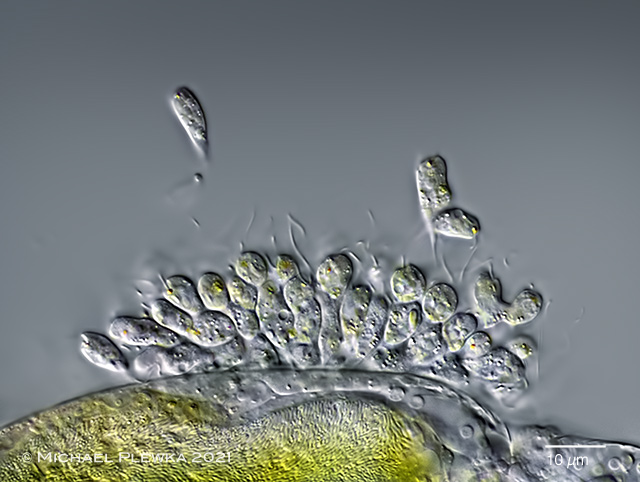 |
| Filinia longiseta longiseta: flagellated ectoparasites. (6) |
| |
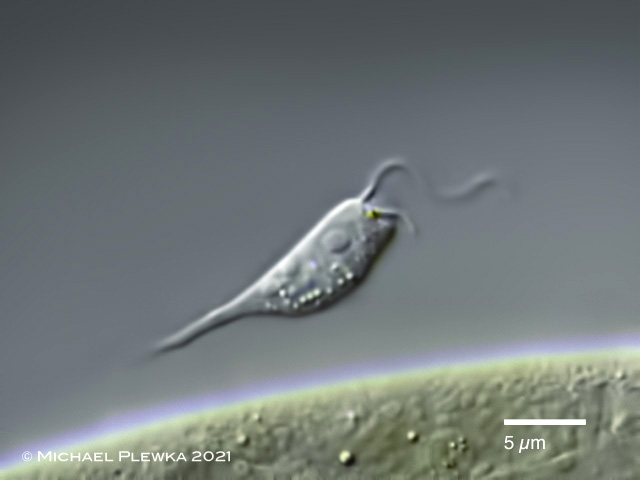 |
| Filinia longiseta longiseta: single ectoparasite. (6) |
| |
| |
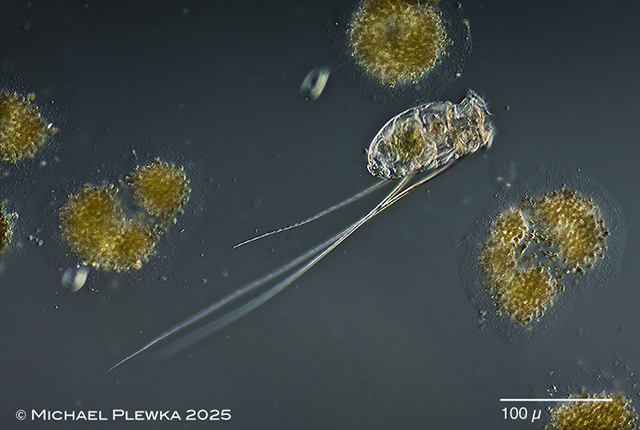 |
| Filinia longiseta longiseta: specimen from (7) |
| |
| |
| |
| Collection of sample (6) courtesy of Uli Drabiniok |
| |
| |
| |
|
|
| |
| |
| |
| Location: Gevelsberg, Grünes Klassenzimmer (pond) (1); (2); (3); Ohligser Heide, pond (4); NSG Heiliges Meer, Großes Heiliges Meer (GHM) (3); Heilenbecker Talsperre (4); Sprockhövel; IG-Metall-Bildungszentrum; Teich (5); pond near GHM, location 10 (6) |
| Habitat: Plankton (1); (2); (3); (4); (5); (6) |
| Date: 23.5.2005 (1); 20.10.2006 (2); 06.04.2009 (3); 11.05.2010 (4); 15.05.2016 (4); 10.05.2019 (3); 15.04.2020 (5); 13.11.2021 (6) |
|
|